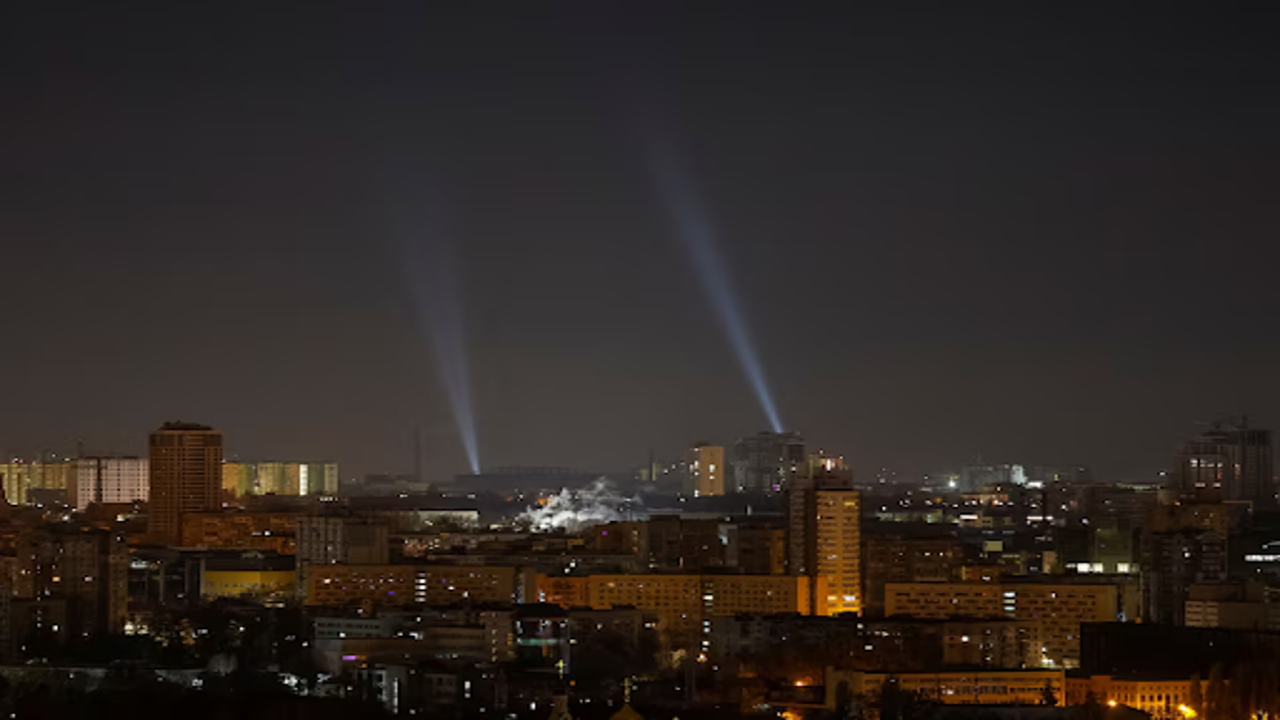
Ukrainian service members scan the skies over Kyiv with searchlights on November 20, 2024, as they look for drones during a Russian drone attack amidst the ongoing conflict between Russia and Ukraine. Reuters
Ukraine has launched a wave of British Storm Shadow cruise missiles into Russian territory, marking a significant development in its use of Western-supplied weaponry. This attack follows Ukraine’s use of U.S. ATACMS missiles just a day earlier, a move widely seen as a strategic push to hit Russian rear bases supporting the ongoing invasion.
Reports from Russian war correspondents and videos shared on Telegram revealed the strikes targeted the Kursk region, which borders northeastern Ukraine. At least 14 explosions were recorded, many preceded by the high-pitched whistle of incoming missiles. Black smoke was seen rising in the distance, and fragments labeled “Storm Shadow” were shared online, suggesting the missiles used were British-supplied.
Though a spokesperson for Ukraine’s General Staff claimed no knowledge of the strikes, officials speaking anonymously confirmed the attack. Moscow has repeatedly warned that targeting Russian territory with Western weapons could escalate the conflict further. However, Ukraine maintains its need to hit logistical hubs inside Russia to weaken Moscow’s war efforts.
The Storm Shadow missiles, which boast a range of over 250 km (155 miles), were previously approved by Britain for use within Ukraine’s borders. This latest strike, however, signals a shift, as Kyiv has been seeking broader permissions from Western allies. Earlier this week, President Joe Biden authorized Ukraine to deploy U.S.-made ATACMS missiles, with Kyiv quickly utilizing them against Russian arsenals in the Bryansk region.
The Pentagon also announced an additional $275 million in military aid to Ukraine, including ammunition for the HIMARS rocket system. Alongside this, the Biden administration forgave $4.7 billion in U.S. loans to Ukraine, an apparent effort to strengthen its ally before the current administration ends.
In response to the strikes, the United States temporarily shut its embassy in Kyiv, citing potential air attack threats, though it plans to reopen shortly. Other nations, including Italy, Spain, and Canada, followed suit, suspending in-person services at their embassies in the Ukrainian capital.
Meanwhile, Russian officials have escalated their rhetoric, with Foreign Intelligence Chief Sergei Naryshkin warning of retaliation against NATO countries aiding Ukraine in these long-range strikes. Moscow has also altered its nuclear doctrine, lowering the threshold for using atomic weapons, though the U.S. dismissed this as provocative posturing.
Adding to the complexity, over 10,000 North Korean troops have reportedly joined Russian forces in the Kursk region. Western nations view this development as a provocative escalation requiring a robust response.
On the battlefield, military analysts suggest that while the longer-range missiles won’t decisively turn the tide, they enhance Ukraine’s ability to strike critical targets, strengthening its position in contested areas like the Kursk region.
As the war enters its 1,000th day, Ukraine faces a challenging future with incoming U.S. President Donald Trump, who has pledged to end the conflict but criticized extensive military aid to Kyiv. Both sides appear to be solidifying their positions ahead of potential peace talks, which haven’t been held since the war’s early months.















